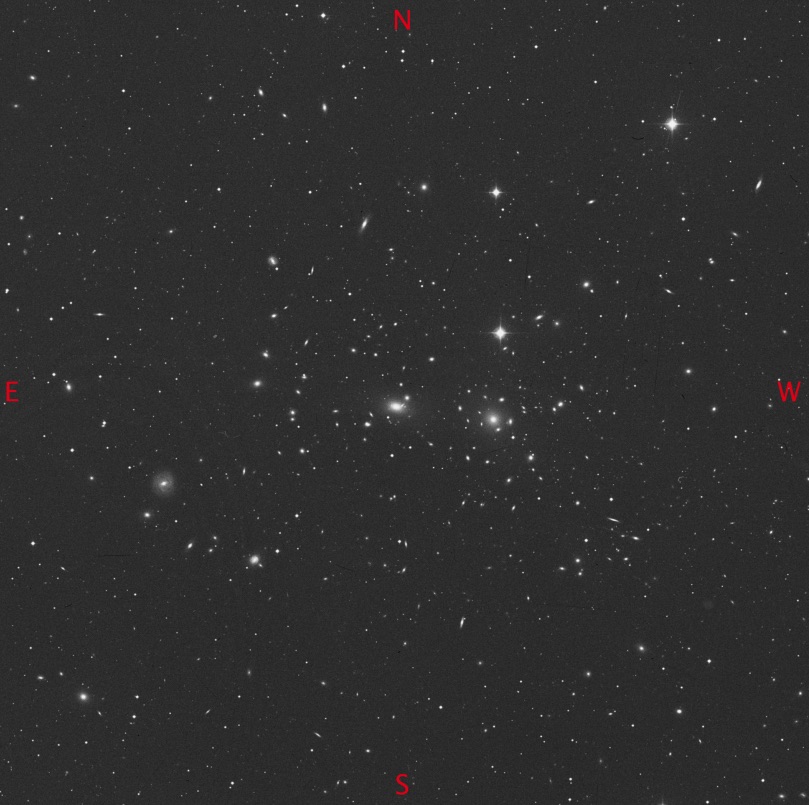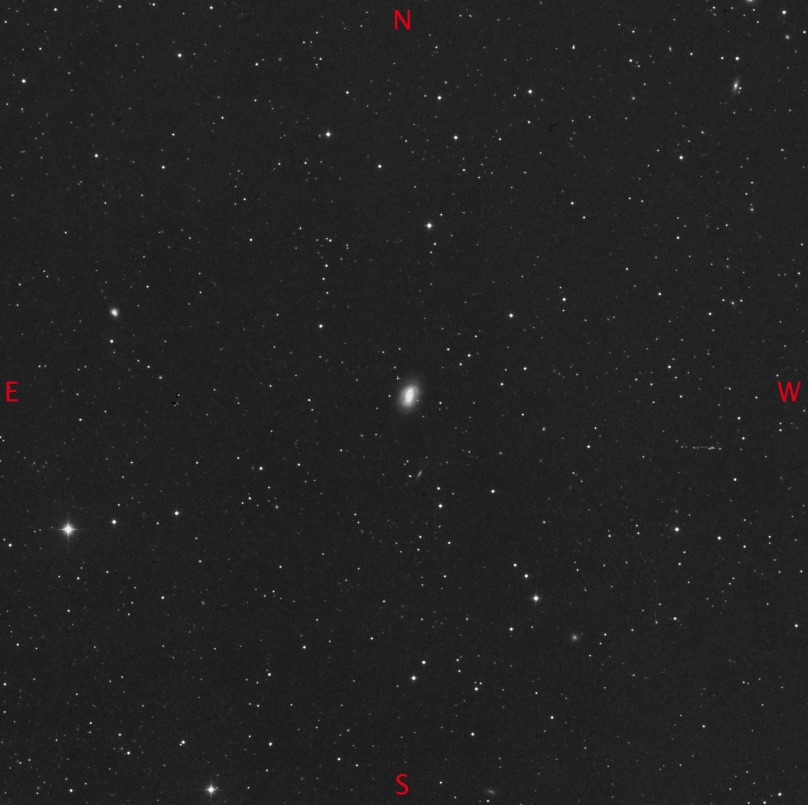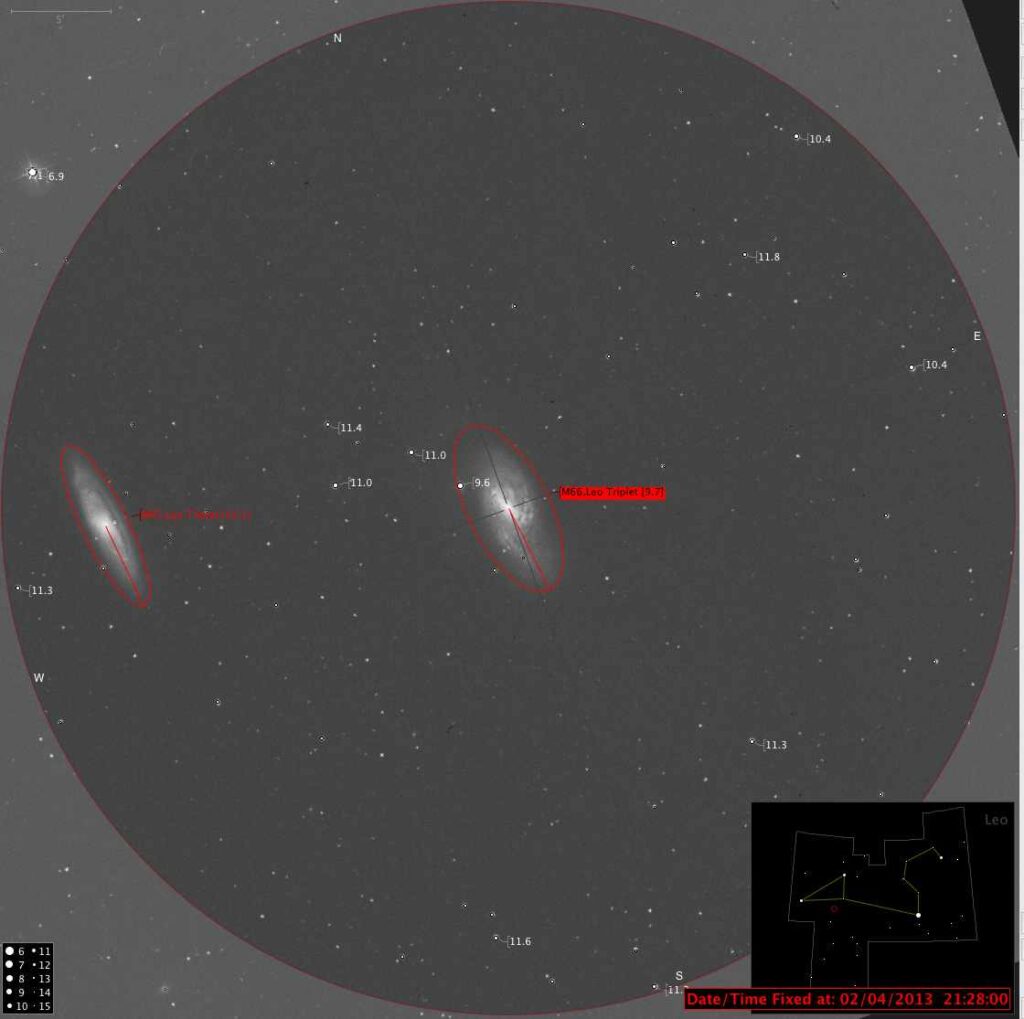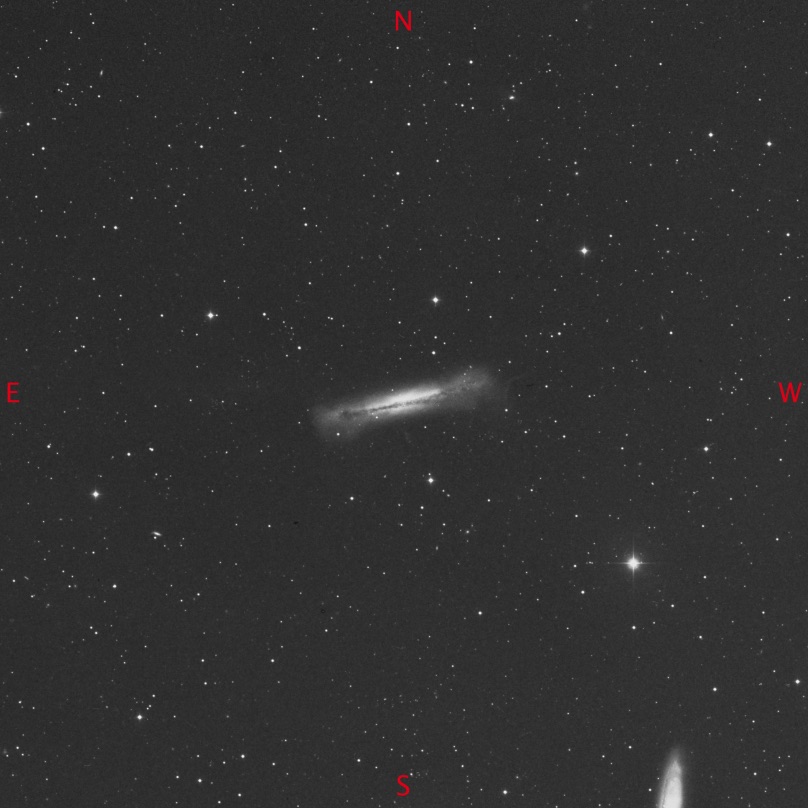This evenings session was Galaxies all the way. The nights are now starting to warm up a little and it’s nice to observe wearing just two fleeces now 🙂 Leaving behind the fleece lined trousers and boots as well as the outer jacket and wooly hat, means Winter is now well and truly behind us.
I’m hoping I can cram in a a load more observing sessions before that June/July period where it never really get dark until well past midnight. On the other hand maybe that should be an excuse to start doing some Lunar work, which dark skies don’t really matter.
Session Data
- Date: 21/04/2015
- Time: 20:54 – 23:41 UT
- Seeing: I Perfectly Stable,
- Transparency: II Clear,
- Temp:11.7c, Air Pressure: 1012mb,
- Humidity: 65%,
- Dew Point: ?,
- Wind Speed: 3mph,
- SQM: 18.3 mags/arcsecond,
- NELM: 5.2mag
C38, NGC4565

In the Altair Astro 250mm, 14mm Delos, 145 X, 29.8′, West is to the 10 O’Clock.
The Galaxy is oriented NW/SE. The two brightest stars in the FOV are a 10.3 mag to the West and one of 8.4mag to the SSE. Just to the NE of the core is a 12.8 mag star.
The galaxy has a length of about 14 arc min. This matches quite well with its listed size of 16 arc min, so I’m seeing most of it. The central bulge has a bright core that fades out towards the edge, where it blends into the main disc.
Switching to the Altair Astro 250mm, 10mm Delos, 203 X, 21.3′, I can’t make out the dark dust line that splits the main disc into two lengthwise.
Nice!!
C35, NGC4889

In the Altair Astro 250mm, 40mm Plossl, 51 X, 52′, West is to the 10 O’Clock.
There are two bright stars of 8.0 and 7.0 mag running to the West of N/S. These point you towards NGC4874 – which is NOT the object of interest here. However if you go due East from here by about 7 arc sec, you will find the faint glow of C35. Both these objects are faint and almost look like stars views through lots of hight thin cloud.
Switching to the Altair Astro 250mm, 14mm Delos, 145 X, 29.8′ I can now make out the outer edges of both these galaxies. C35 looks to be a little brighter then NGC4874, which is good as the GSC stars at their cores are 9.5 and 10.9 mag respectively. I cannot make out either objects orientation, but both are held in view with AV1.
C40, NGC3626

In the Altair Astro 250mm, 10mm Delos, 203 X, 21.3′ West is to the 11 O’Clock.
There are two stars 11.7 and 12.3 mag to the edge of the FOV in the SW. Very small, even at x203. Galaxy oriented NW/SE. There is a brighish core which is compact and almost stellar.
My voice log reads ‘ Very small, very boring’
M65, NGC3623
In the Altair Astro 250mm, 40mm Plossl, 51 X, 52′, West is to the 12 O’Clock.
Both M65 and M66 can be seen in the same FOV. M65 looks a little fainter than M66.
In the Altair Astro 250mm, 14mm Delos, 145 X, 29.8′, the galaxy is oriented N/S . The core is bright, but diffuse, but is larger in proportion to the overall size than the core of M66. The overall size is about 6 arc sec in length.
M66, NGC3627

In the Altair Astro 250mm, 40mm Plossl, 51 X, 52′, West is to the 12 O’Clock.
Both M65 and M66 can be seen in the same FOV. M66 looks a little fainter than M65.
Switching to the Altair Astro 250mm, 14mm Delos, 145 X, 29.8′, the galaxy is oriented N/S and measures about 8 arc sec across and about half that in width. Although it’s difficult to definitely say that a spiral structure is seen, the brighter core area is oval in shape with the outer area beyond this, looks mottled which could suggest a spiral structure – but not for me.
The nicer view is through the 40mm.
NGC3628

In the Altair Astro 250mm, 40mm Plossl, 51 X, 52′, West is to the 12 O’Clock.
The galaxy is oriented E/W and is about 12 arc sec in length. If I place the scope carefully I can fit this and M65 and M66, in the FOV at the same time.
The galaxy seems to have a mottled texture with a very slightly brighter core area.